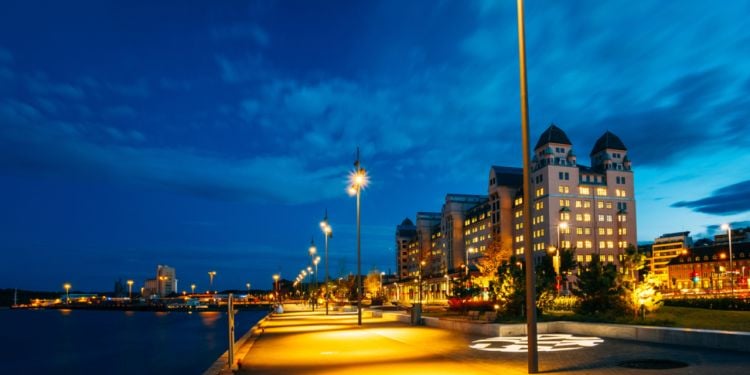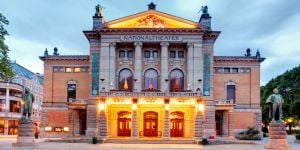
Oslo may be smaller than international cities like London or Amsterdam, but it offers a blend of modernity, charm, and history. Like all capitals, it is undergoing gentrification, with even its most traditional areas receiving gradual modern upgrades. As one of the safest countries in the world, Norway blurs the lines between "good" and "bad" neighborhoods more than other cities. Living in Oslo generally means enjoying a high quality of life, with certain districts standing out as particularly desirable. Here's a tour of the city's top neighborhoods.
Oslo City Center
Oslo's city center serves as a commercial hub, brimming with restaurants, shops, and office spaces. Housing here is extremely challenging, with most apartments commanding premium prices. Luxury residential developments are on the rise, offering opportunities to live at the core of Oslo's vibrant activity, albeit at a steep cost.
Bjørvika
Bjørvika, a rapidly transforming waterfront neighborhood along Oslo's fjord, epitomizes modern Oslo. Once an industrial port, it has been revitalized into one of the city's most contemporary and attractive areas, featuring sleek residences and iconic landmarks like the Oslo Opera House and the new Munch Museum. The neighborhood is celebrated for its avant-garde architecture, pedestrian-friendly waterfront paths. Popular among young professionals and families, Bjørvika delivers a vibrant urban lifestyle with easy access to restaurants, cafés, and shops, all set against the stunning backdrop of Oslo Fjord. While property prices are high, Bjørvika remains one of Oslo's trendiest neighborhoods.
Aker Brygge
Aker Brygge, following extensive renovation, has solidified its reputation as one of Oslo's most exclusive districts. Luxury apartments with panoramic fjord views, high-end restaurants, and a sophisticated atmosphere define this area. Although it may exceed most residents' budget, strolling along the waterfront and enjoying the area's ambiance is a must. The adjacent Tjuvholmen extension adds an artistic flair, boasting galleries and fine dining options.
Western Oslo neighborhoods
Frogner
An upscale, residential neighborhood close to the Royal Palace and city center, Frogner features Haussmann-style architecture, luxury boutiques, and embassy-lined streets in a refined atmosphere. It is a favorite with expatriate families, especially French nationals, as it is home to Oslo's French Lycée.
The renowned Frogner Park, home to the Vigeland Sculpture Park, adds to its family-friendly appeal. Though property prices are high, Frogner retains a peaceful and sophisticated vibe.
Majorstuen
Adjacent to Frogner, Majorstuen rivals it in real estate costs, ranking among Norway's priciest neighborhoods. A bustling area with trendy restaurants and high-end boutique shops, Majorstuen appeals to families and expatriates seeking excellent amenities and public transport connections.
St. Hanshaugen and Bislett
St. Hanshaugen features lush greenery, including a large park with breathtaking views of Oslo and its fjord. Bislett, nearby, is a magnet for young professionals and students due to its proximity to the university.
These neighborhoods are centrally located yet more affordable than Frogner or Majorstuen, making them popular residential options.
Eastern Oslo neighborhoods
Grünerløkka and Torshov
Once industrial zones, these eastern neighborhoods are now the epicenter of Oslo's creative and cultural scene. Grünerløkka, in particular, is favored by young adults for its bohemian vibe, trendy cafés, and independent shops.
Torshov, just to the north, offers a quieter ambiance, appealing to families with its parks and restaurants. The area is well-connected to the city center by tram and provides a harmonious blend of urban accessibility and residential tranquility.
Tøyen
Adjacent to Grünerløkka, Tøyen is a former working-class district undergoing significant revitalization and an increasingly sought-after neighborhood due to affordable housing and expansive green spaces like the Botanical Garden and Tøyen Park. Urban renewal projects bring fresh energy to the area while maintaining its accessible and central charm, complete with its own metro station
Oslo's suburbs
Surrounded by forests and lakes, Oslo imposes ever-increasing housing prices in the city center yet offers an escape to nature. Many families are opting to move beyond Rings 1 and 2—Oslo's two concentric ring roads—in search of more spacious homes and greener surroundings.
Northern suburbs near the forest: Holmenkollen, Kringsjå, Kjelsås
Nestled at the edge of the Nordmarka forest, these northern suburbs are perfect for outdoor enthusiasts and families. Holmenkollen, home to the iconic ski jump, offers unparalleled access to year-round skiing and hiking. While commuting to the city center might take longer, the peaceful, nature-filled environment of these neighborhoods provides an excellent balance of urban and rural living and particularly appeals to families seeking a serene, green environment just a few kilometers from Oslo.
Western suburbs
Oslo's western suburbs are characterized by calm, leafy neighborhoods ideal for families. Bygdøy Peninsula, known for its museums, also features a small exclusive residential area. Other popular family-friendly suburbs like Vestre Aker and Ullern offer spacious homes and apartments with excellent T-Bane connections to the city center via metro lines 1 and 2, making them highly desirable for well-off families.
Southern suburbs
Ekeberg and Nordstrand, located south of the city, are known for their spacious homes and scenic fjord views. Offering more affordable yet high-quality housing, these peaceful, green neighborhoods are perfect for families. Excellent public transport connections make commuting to the city center easy, adding to their appeal.
We do our best to provide accurate and up to date information. However, if you have noticed any inaccuracies in this article, please let us know in the comments section below.











